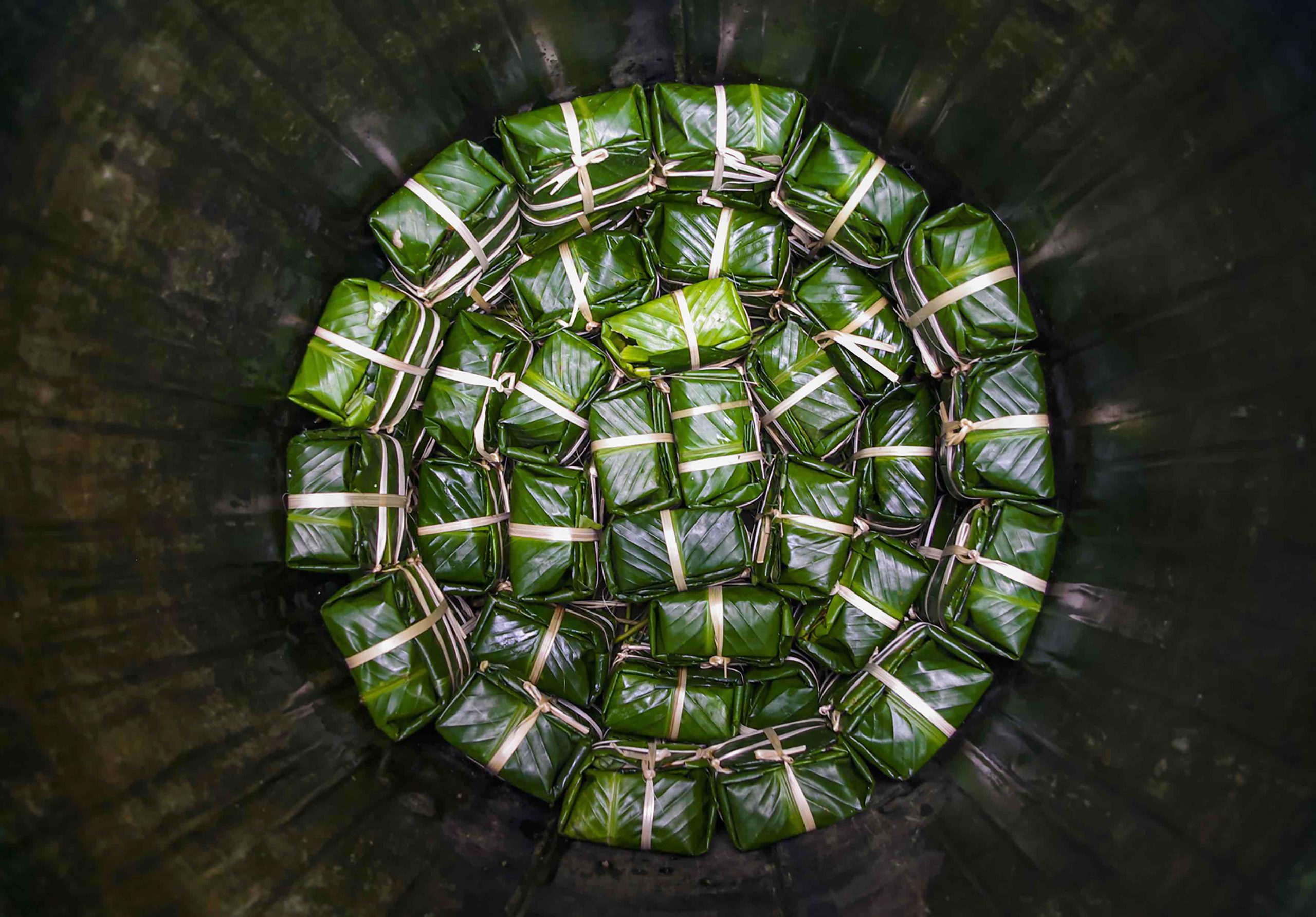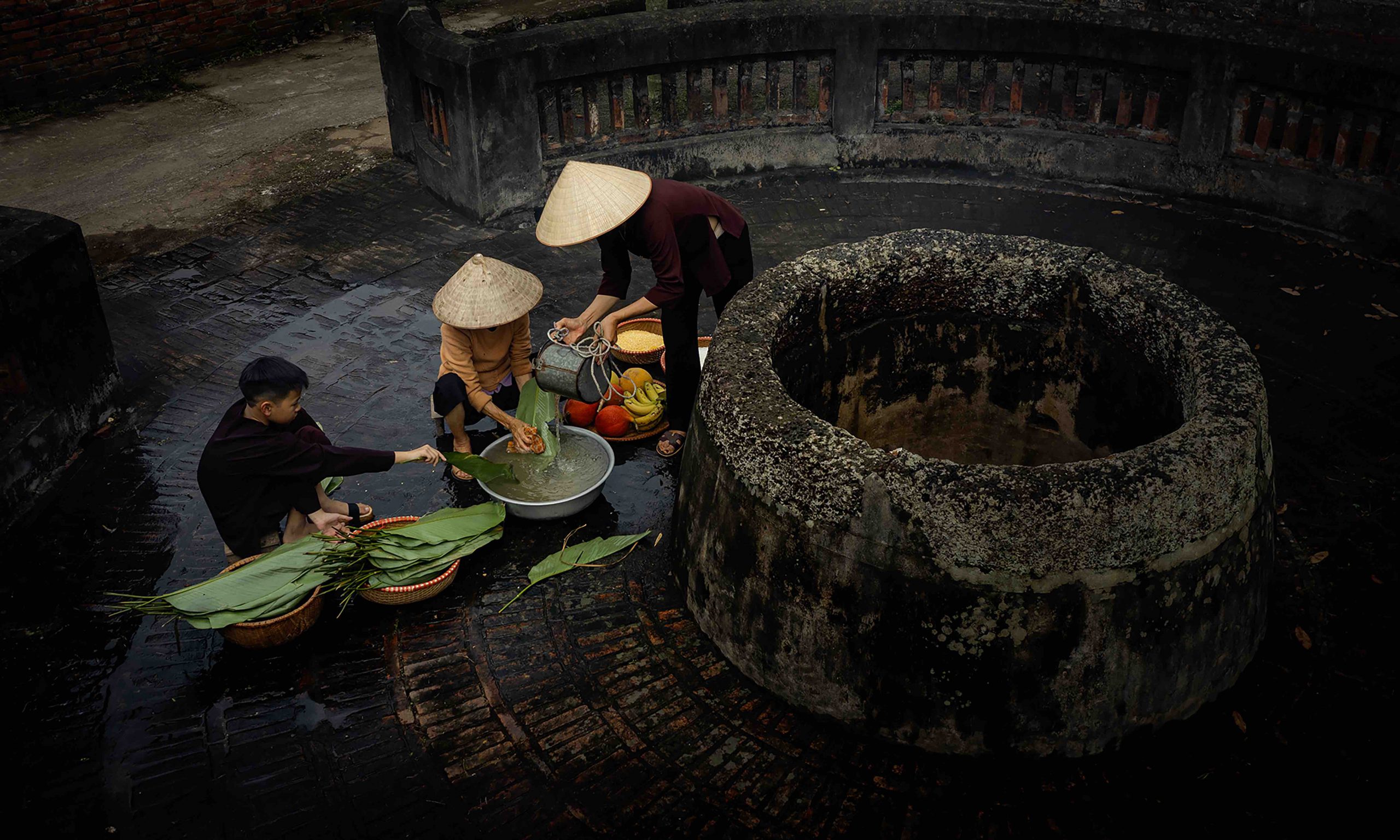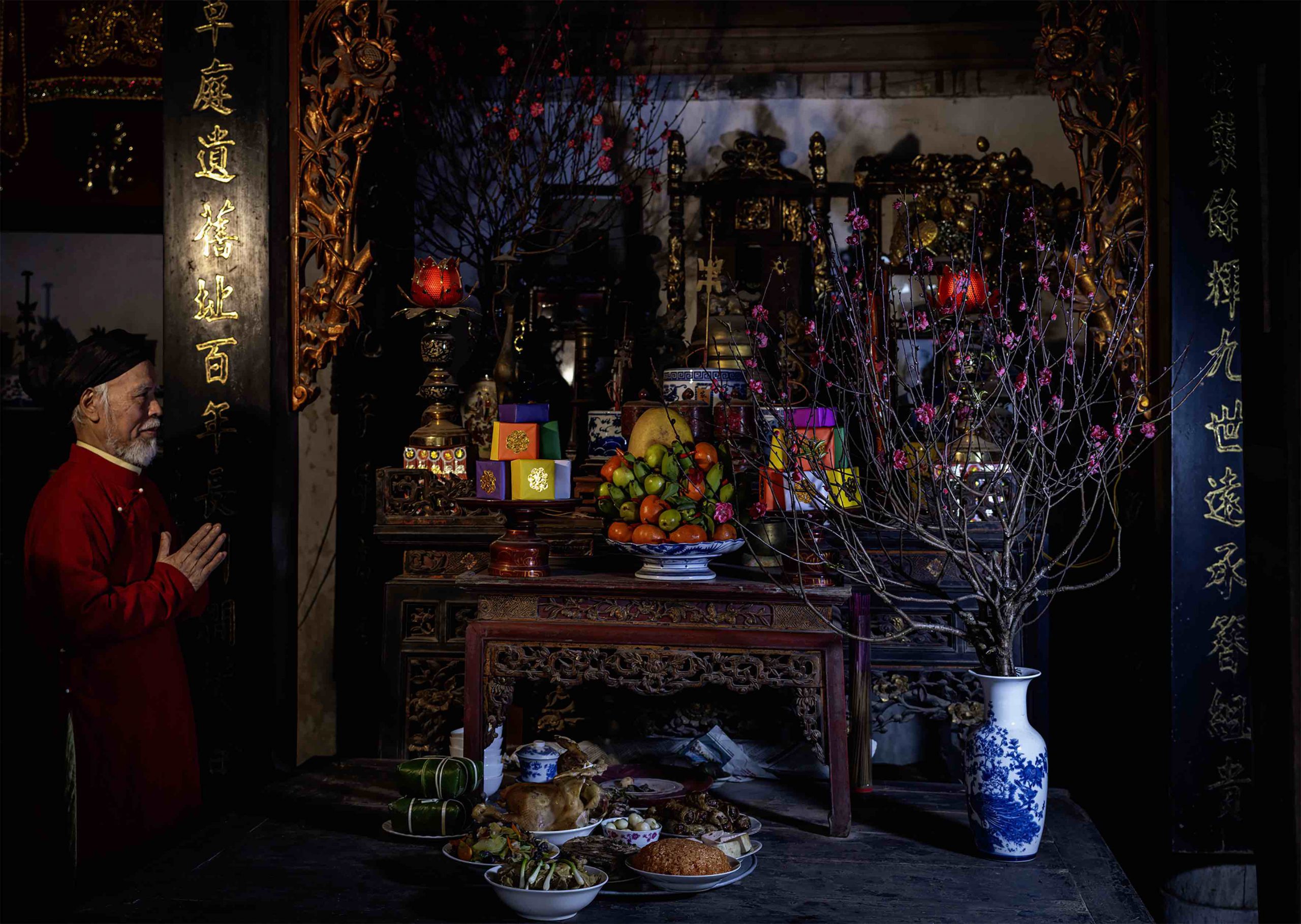Story: Tran Hong Lieu
Photos: Le Huy
Every Tet holiday, regardless of location, occupation, or economic status, every Vietnamese family strives to place a pair of Banh Chung on their ancestral altar. In the Vietnamese psyche, Banh Chung is more than just a dish—it is a tradition, a cultural symbol, and a heartfelt expression of gratitude to ancestors and heritage.

A part of my childhood—growing up in a small town during the Subsidy Era, marked by hardship—was deeply connected to nights spent tending the Banh Chung pot by the crackling fire in the North’s distinctively fresh, chilly air. Around the 25th or 26th of the last lunar month, my parents would bring home heavy bundles of meat distributed from their workplaces. My father would carefully wash, slice, and portion the meat: some for making meat jelly, some for marinating as barbecued pork, and some for the Banh Chung filling.
My mother would come in and out, helping my father and constantly saying, “Three days of Tet feasting, three months of summer hunger, if we could have this abundance all year, it would be wonderful.” My father carefully placed the best, freshest slices of pork belly into a large pot with the reminder, “This is to be wrapped into the Banh Chung, okay!”

While engrossed in watching my father divide the meat, my siblings and I would respond, “Yes, sir!” In our minds, the meat for the Banh Chung filling held a more important place than that used for the barbecued pork or meat jelly, though we couldn’t explain why.
As children, our favorite step was to help wrap the Banh Chung. This crucial task was carried out by our grandparents. We would excitedly sweep the yard, lay out mats, fetch dong leaves and sit around, waiting for our grandparents. The shiny green dong leaves were washed clean, dried, and carefully stripped of their veins by my mother, then neatly arranged on bamboo trays that had darkened with time. The round, golden yellow mung beans were placed in a ceramic bowl next to a basket of pure white sticky rice. The pork belly was sliced and seasoned with a bit of salt mixed with pepper and finely chopped shallots. Everything was in place, just waiting for Grandpa and Grandma to sit down on the mat and start wrapping the cakes.
However, as always, even though my parents had prepared all the ingredients; even though my three siblings had taken their positions, one next to the dong leaves, another by the mung beans, Grandpa would still look around and ask, “Are all of you here?” before slowly going to the well to wash his hands and feet. Before that, he had already changed into a new shirt, donning a traditional headscarf usually reserved for important occasions. Grandma, dressed in her purple ao dai, was chewing betel nuts while waiting for Grandpa. I, a 12 or 13-year-old girl, was always puzzled as to why Grandpa insisted that all three of us be present for wrapping the Banh Chung. Our participation only made things more hectic. Sometimes the youngest would spill rice all over the mat, or the second child would be caught sneaking some mung beans. Despite this, Grandpa always asked my mother to arrange the time for wrapping Banh Chung on a weekend so we could all participate.

The wait for Grandpa to finish his pre-wrapping preparations felt long, but once we started wrapping, it became fun. Each of us had the chance to learn the art of wrapping from Grandpa and Grandma. Three small, misshapen, loose cakes—”no different from a shrimp paste dumpling,” as my mother would say—lay beside the square, neatly tied cakes on the green dong leaves, resembling little piglets snuggling next to their parents.
After the pot was set up, Grandpa carefully placed each cake in the pot, one on top of the other, in neat rows. The large pieces of firewood slowly caught fire, the flames turning from red to scarlet and occasionally crackling. All of this created unforgettable childhood memories of when we were poor but happy. Thanks to those late afternoons with our grandparents, today, we all know how to wrap Banh Chung, each one as square and firm as if made in a mold.
In rural areas, where houses have spacious yards and gardens, the tradition of wrapping Banh Chung every Tet is still practiced today. In the last decade, many urban families have also revived the practice of wrapping and boiling Banh Chung.
After the Kitchen Gods have been sent away, passersby might catch glimpses of Banh Chung pots steaming in small yards next to apartment complexes or in vacant lots. Nearby, a few women chat as they peel onions for pickling, while further off, a group of children run and play.
These simple yet cherished scenes make a Vietnamese Tet more complete.










